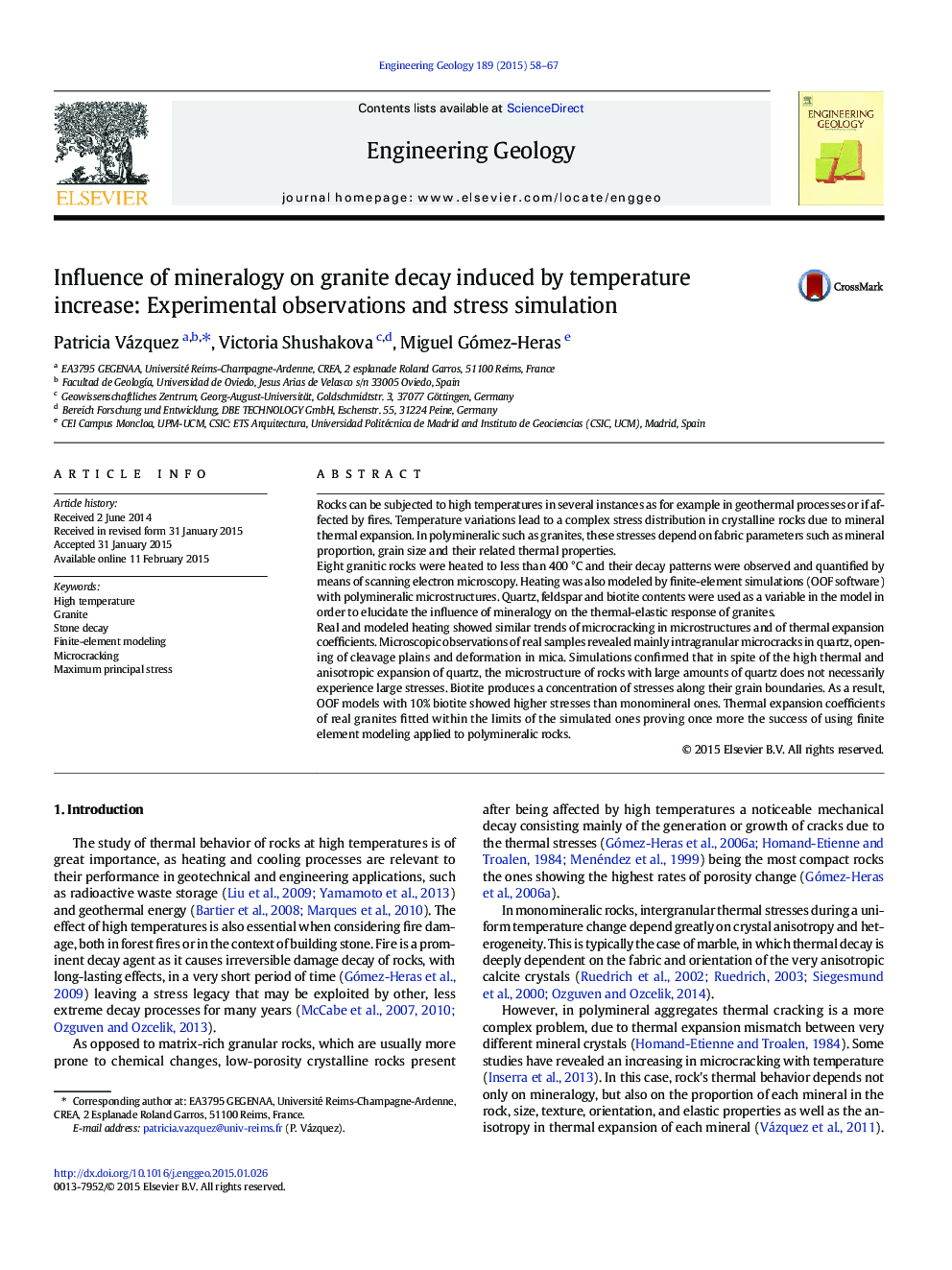| کد مقاله | کد نشریه | سال انتشار | مقاله انگلیسی | نسخه تمام متن |
|---|---|---|---|---|
| 4743317 | 1641796 | 2015 | 10 صفحه PDF | دانلود رایگان |
• Granite decay under high temperature was studied via microscopy.
• Finite-element modeling provides comparable results with experimental observations.
• Biotite produces a stress concentration along grain boundaries.
• The highest principal stress appears with 45% of quartz and feldspar and 10% biotite.
• Thermal expansion increases with quartz content.
Rocks can be subjected to high temperatures in several instances as for example in geothermal processes or if affected by fires. Temperature variations lead to a complex stress distribution in crystalline rocks due to mineral thermal expansion. In polymineralic such as granites, these stresses depend on fabric parameters such as mineral proportion, grain size and their related thermal properties.Eight granitic rocks were heated to less than 400 °C and their decay patterns were observed and quantified by means of scanning electron microscopy. Heating was also modeled by finite-element simulations (OOF software) with polymineralic microstructures. Quartz, feldspar and biotite contents were used as a variable in the model in order to elucidate the influence of mineralogy on the thermal-elastic response of granites.Real and modeled heating showed similar trends of microcracking in microstructures and of thermal expansion coefficients. Microscopic observations of real samples revealed mainly intragranular microcracks in quartz, opening of cleavage plains and deformation in mica. Simulations confirmed that in spite of the high thermal and anisotropic expansion of quartz, the microstructure of rocks with large amounts of quartz does not necessarily experience large stresses. Biotite produces a concentration of stresses along their grain boundaries. As a result, OOF models with 10% biotite showed higher stresses than monomineral ones. Thermal expansion coefficients of real granites fitted within the limits of the simulated ones proving once more the success of using finite element modeling applied to polymineralic rocks.
Journal: Engineering Geology - Volume 189, 30 April 2015, Pages 58–67
